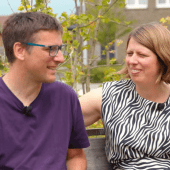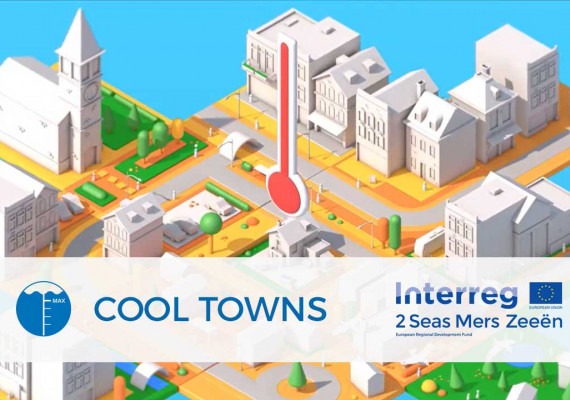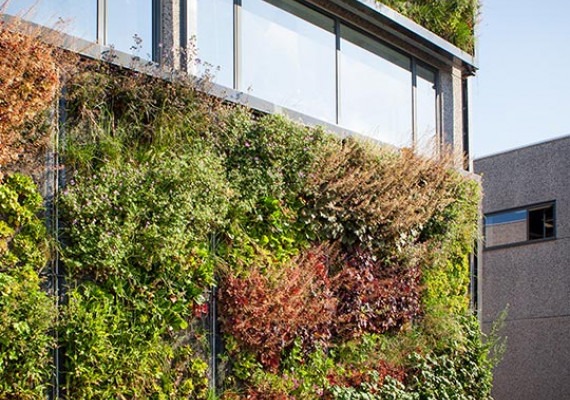Cool Towns
Spatial Adaptation for Heat Resilience in Small and Medium Sized Cities in the 2 Seas Region
Priority Axis
Adaptation to Climate ChangeSpecific objective
Adaptation to Climate Change
Lead partner
Gemeente MiddelburgContact
Begindatum
01/09/2018Einddatum
31/12/2022Project budget
7 948 971 €ERDF amount
4 664 563 €ERDF rate
59%Over
Common challenge
Climate change induces warmer summers, leading to increased droughts and heat waves. In numerous small and medium-sized cities across the 2 Seas area, elevated temperatures adversely impact public health, productivity, well-being, air and water quality, and other urban systems, collectively known as Heat Stress. Recognising the urgent need for spatial heat stress adaptation, the Cool Towns project focused on improving heat resilience in these cities. The challenge lies in cities lacking essential knowledge and tools for setting heat resilience objectives, making informed investment decisions, implementing effective adaptation measures, integrating heat resilience into broader climate strategies, and building capacity among urban planners, architects, builders, and homeowners. The project addressed these gaps, aiming to empower cities to combat the impacts of climate change and foster a more resilient urban environment.
Overall objective
Main outputs
Cross border approach
Main Achievements
Climate change causes warmer summers with more frequent heat waves. In many cities and towns, this causes heat stress and has an impact on public health, productivity and well-being. Cool Towns is a collaboration of 14 partners - cities, academia and companies - to reduce heat stress in cities. The partners worked on solutions at street level to combat heat effectively.
To determine the extent of heat stress in cities and the impact of various intervention scenarios, Cool Towns developed a model to map stress in partner cities and combine this with spatial information on vulnerable groups and functions to improve heat resilience planning and interventions in cities.
To gain insight into the current thermal comfort of our cities during summer days, Cool Towns created a measurement protocol. With this standardised method partners measured heat stress on locations in Ostend and East Flanders (BE), Breda and Middelburg (NL), Kent, Southend-on-Sea (UK) and Saint-Omer (FR) and surveyed public perception of heat stress. This measurement program was repeated each summer from 2019 to 2022.
Cool Towns invested in pilots to demonstrate, compare, and measure the cooling effect of different interventions to reduce heat stress in public space on 15 sites in Middelburg, Breda, Oostende, East Flanders, Saint-Omer, Kent and Southend-on-Sea. Across these sites partners added countless trees and green infrastructure, built 5 living walls and 2 green roofs, created a water playground and a cool bicycle parking, installed cool pavement and 2 shade canopies to create cool spaces in our increasingly hot cities.
Based on the insights gained they developed tools to better prepare cities for future heat events. For instance, a Decision Support Toolkit and Intervention Catalogue allowing planners, landscape architects and local authorities to identify the best heat resilience measures for their territory; a roadmap for policymakers shows practical steps for heat resilient urban development; next, training programmes for urban planes, policy makers, students and property owners on heat stress and available solutions and
experience. During the project lifetime, over 5500 people participated to such trainings. Finally, the Urban Heat Atlas brings all insights together in a standardised assessment for mapping heat vulnerabilities.
Testimonial

It’s the only bit of green we have here in the street. Before that, it was just plain concrete here. It is also a place for the kids to play now. Especially when it’s extremely hot, like the heat waves we had last week, we can really tell cooling is sought here.
Local residents


